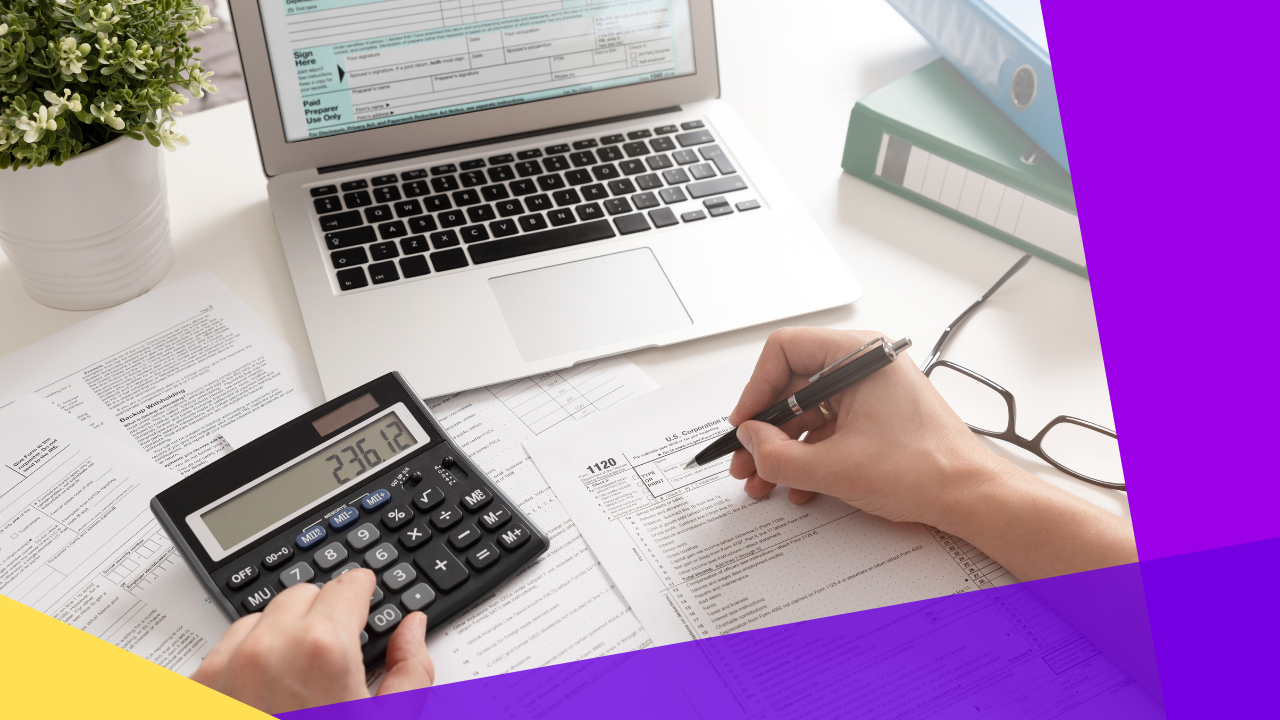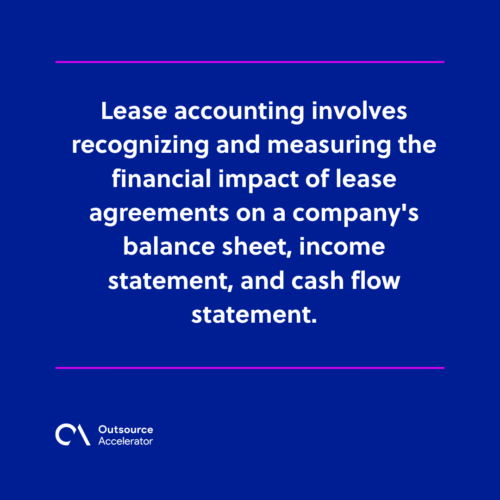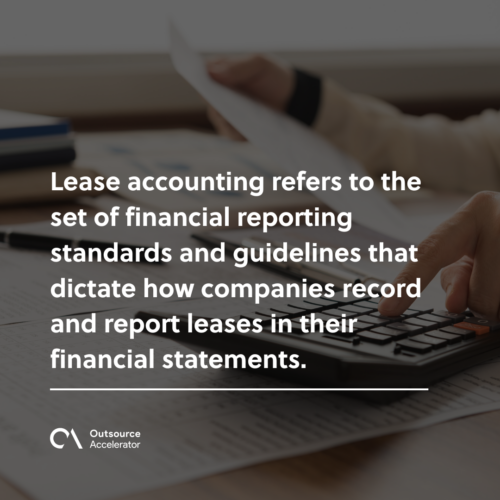Lease accounting for your business: A fundamental overview

Lease accounting is a complex and ever-evolving aspect of financial management that impacts businesses of all sizes.
Despite being established in 2019, companies are still confused about implementing the latest lease accounting standards.
In this article, we’ll briefly compare the old and new lease accounting standards and explore their importance to your business.
What is lease accounting?
Lease accounting refers to the set of financial reporting standards and guidelines that dictate how companies record and report leases in their financial statements.
It involves recognizing and measuring the financial impact of lease agreements on a company’s balance sheet, income statement, and cash flow statement.
Under lease accounting, companies are required to classify leases as operating or finance (capital) leases based on specific criteria defined by accounting standards.
Each classification has distinct accounting treatments that determine how lease expenses are recognized over the lease term. They also rule whether the leased asset and corresponding liability are recorded on the balance sheet.

Evolution of lease accounting standards
Historically, many companies used to structure lease agreements as operating leases. This allowed them to keep lease-related obligations off the balance sheet, providing a more favorable appearance of financial health and lower leverage.
However, this approach lacked transparency and made it challenging for stakeholders to assess the company’s true financial position.
In response to these concerns, accounting standards have evolved to bring greater transparency to lease-related obligations. The new lease accounting standards require most leases to be recognized on the balance sheet.
This change enhances the comparability and accuracy of financial reporting and provides stakeholders with a more comprehensive view of a company’s lease commitments.
Lease accounting is crucial to financial reporting, impacting a company’s financial ratios, debt levels, and overall financial performance. Properly implementing lease accounting standards is essential for businesses to comply with accounting regulations.
Old vs. New lease accounting standards
Here’s a quick overview of what the old and new lease accounting standards entail:
Old lease accounting standards
Old lease accounting has the following:
- Generally Accepted Accounting Principles (US GAAP) – ASC 840 – Under ASC 840, operating leases were not recorded on the balance sheet. Instead, they were treated as off-balance sheet transactions, reducing visibility into a company’s lease obligations and financial health.
- International Financial Reporting Standards (IFRS) – IAS 17 – IAS 17 treats operating leases as off-balance sheet items. This approach led to inconsistencies in financial reporting and made it challenging for stakeholders to accurately compare companies’ financial positions.
- Lease classification – Leases are classified as either operating leases or finance (capital) leases based on specific criteria, such as the transfer of ownership, bargain purchase option, lease term, and present value of lease payments.
- Financial statement impact – Operating leases were only disclosed in the footnotes of financial statements, which made it difficult for users to assess the true financial leverage of companies.
New lease accounting standards
Meanwhile, the new lease accounting standards cover the following:
- US GAAP – ASC 842 – ASC 842 came into effect for public companies in 2019 and private companies in 2021. This standard now requires most leases to be recognized on the balance sheet as both a right-of-use (ROU) and a corresponding lease liability.
- IFRS – IFRS 16 – IFRS 16, effective from January 2019, also requires lessees to recognize most leases on the balance sheet as ROU assets and lease liabilities. This change was made to improve transparency and comparability in financial reporting.
- Lease classification – The new standards eliminate the distinction between operating and finance leases for lessees. Instead, all leases are treated similarly, with certain practical expedients available for short-term leases and leases of low-value assets.
- Financial statement impact – By recognizing lease assets and liabilities on the balance sheet, the new standards accurately reflect a company’s financial position. This ensures users understand a company’s lease-related obligations and commitments more clearly.
Key similarities between old and new standards
Some aspects remain relatively unchanged between the two leasing standards:
- Definition of a lease – Both old and new standards define a lease as a contract that conveys the right to use an identified asset for a specified period in exchange for consideration.
- Lessors’ accounting – The new standards do not significantly change lessors’ accounting treatment. Under old and new standards, lessors continue to classify leases as operating, sales-type, or direct financing leases
- Lease term – Both old and new standards require companies to consider the non-cancellable period of the lease. This includes renewal and termination options that are reasonably certain to be exercised when determining the lease term.
In summary, the main difference between the old and new lease accounting standards lies in how lessees account for leases.
Under the old standards, operating leases were treated as off-balance sheet items. On the other hand, the new standards require lessees to recognize most leases on the balance sheet as ROU assets and lease liabilities.
How does lease accounting affect your business?
Lease accounting can have significant implications for businesses, particularly for those that lease assets or properties as part of their operations.
Here are some ways lease accounting affects businesses:
Balance sheet impact
The balance sheet serves as a snapshot of your company’s assets, liabilities, and equity at a given point in time.
Under the new standards, the balance sheet now recognizes lease assets and lease liabilities. This changes the total amount of assets and liabilities on the balance sheet.
Balance sheets can affect key financial ratios, such as debt-to-equity and leverage ratios. This potentially influences decisions made by investors, lenders, and other stakeholders.
Financial reporting transparency
Lease accounting is important because it affects financial reporting transparency. This gives investors greater insight into a company’s finances and business model.
Without the ability to see what assets are being used by the company, you won’t be able to make informed decisions on whether to invest in a business or not. Lease accounting reveals a company’s true financial condition.

Lease management and strategy
With lease-related information readily available on the balance sheet, companies are prompted to adopt more strategic approaches to lease management.
Businesses may now evaluate their lease portfolio more comprehensively. They can make informed decisions about lease renewals, terminations, and negotiations to optimize costs and asset utilization.
Effect on earnings and cash flows
Lease accounting changes can affect a company’s reported earnings and cash flows.
The front-loaded recognition of lease expenses under the new standards can result in higher expenses in the early years of the lease. This impacts net income and operating cash flows.







 Independent
Independent




